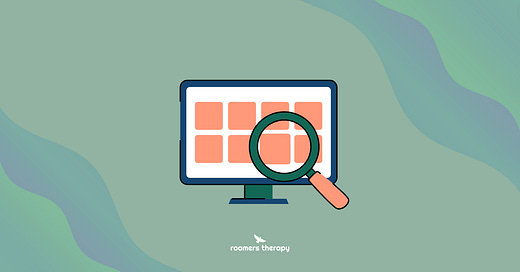Identifying mental health risks
When you understand your triggers, signs, and symptoms, you can learn how to prevent mental health problems.
Experiencing problems
Everyone experiences mental health problems every now and then, and many times we may feel like they come on suddenly and unexpectedly. This may be true sometimes, but the reality is that most of the time our bodies might be warning us of a potential mental health risk (e.g., depressive episode) before it happens. We may ignore these warning signs intentionally if we want to push past them or unintentionally if we are not aware of the signs. It’s important to understand and listen to these signs so that we can prevent mental health problems.
Triggers
The first step in preventing mental health problems is understanding our triggers. Triggers are things that can bring back mental health problems and may include things like people, places, objects, situations, behaviors, and thoughts. When we understand our triggers, we can learn to avoid or manage them.
Example triggers can include:
Certain fragrances
Dates, holidays, seasons
Topics of conversations
Movies, songs, or television shows
A specific location (like a childhood home)
A person (like and ex-partner)
Signs
Next is identifying our warning signs. Warning signs are things that our body does to let us know that our mental health may be at risk.
Example signs can include:
Skipping meals
Engaging in unhealthy coping patterns
Overuse of substances
Sleeping in or oversleeping
Disrupting our routines
Neglecting our personal care (e.g., skipping showers, dental hygiene, skin care)
Symptoms
The third step is identifying symptoms we may be experiencing. Symptoms are often conflated with signs; however, they are different. Signs refer to the observable ways mental health problems may manifest themselves. Symptoms are the non-observable feelings, sensations, or behaviors that may manifest as a result of mental health problems.
Example symptoms can include:
Intense fear
Thoughts of death, dying, or suicide
Sadness or lack of joy
Hyper-vigilance Panic
Prevention
When you understand your triggers, signs, and symptoms, you can learn how to prevent mental health problems. Self-care is the best way to prevent mental health risk from becoming problems. Self-care are small behaviors we do consistently that can reduce the risk of mental health problems.
Examples include:
Working out, eating well, and sleeping enough
Setting a routine
Journaling
Going to therapy
Practicing good hygiene
Managing mental health problems
This refers to ways we may intervene to manage mental health problems. Some of these behaviors may be the same as self-care behaviors.
Examples include:
Working out to relieve stress
Sleeping and resting when feeling exhausted
Setting a routine to feel less overwhelmed
Going to therapy
Challenging negative thoughts
Practicing self-compassion
Practicing urge surfing to manage triggers
Take-aways
Important take aways for identifying and addressing mental health risks include: Regardless of how much progress we make, mental health problems may still occur. This does not diminish our progress.
Identifying mental health risks is the most important step in preventing mental health problems.
Preventing mental health problems is always easier than managing or intervening. However, both are possible.
Practicing self-compassion every step of the way is very important for your health and progress.
Help is always available regardless of how much progress you have made throughout life.




